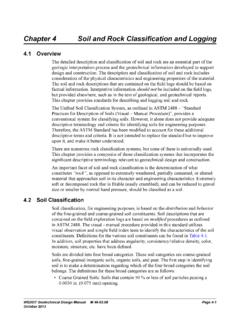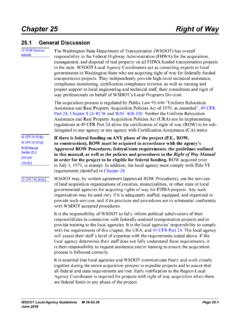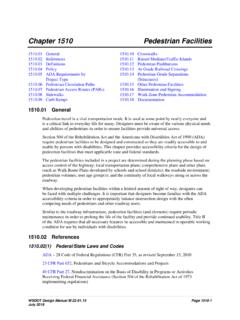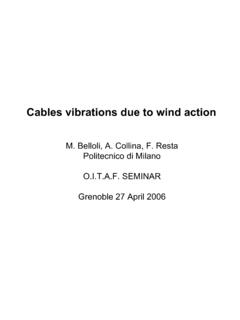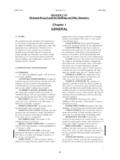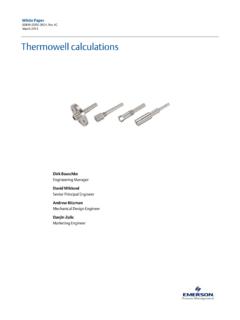Transcription of NCHRP 20-07 TASK 244 LRFD GUIDE SPECIFICATIONS FOR …
1 I ATTACHMENT A 2009 AGENDA ITEM 5 - T-5 (WAI 31) (REVISION 1) NCHRP 20-07 TASK 244 lrfd GUIDE SPECIFICATIONS FOR THE design OF PEDESTRIAN BRIDGES FINAL DRAFT lrfd GUIDE SPECIFICATIONS FOR THE design OF PEDESTRIAN BRIDGES TABLE OF CONTENTS ii 1 1 1 MANUFACTURER-DESIGNED 1 COLLISION MITIGATION .. 1 2 2 3 LOADS .. 2 PEDESTRIAN LOADING (PL) .. 2 VEHICLE LOAD (LL) .. 4 EQUESTRIAN LOAD (LL) .. 4 wind LOAD (WS) .. 5 FATIGUE LOAD (LL) .. 5 APPLICATION OF LOADS .. 5 COMBINATION OF LOADS.
2 5 4 6 6 6 5 6 6 7 7 7 HALF-THROUGH 7 Lateral Frame design Top Chord Stability .. 8 Alternative Analysis 10 STEEL TWIN I-GIRDER AND SINGLE TUB GIRDER SYSTEMS .. 11 11 Lateral Torsional Buckling Resistance - Twin 11 Lateral-Torsional Buckling Resistance-Singly Symmetric Sections .. 12 8 TYPE SPECIFIC 12 12 STEEL HSS 12 12 Detailing .. 13 Tubular Fracture Critical 13 FIBER REINFORCED POLYMER (FRP) MEMBERS .. 14 REFERENCES .. 14 lrfd GUIDE SPECIFICATIONS FOR THE design OF PEDESTRIAN BRIDGES 1 1 GENERAL SCOPE These GUIDE SPECIFICATIONS address the design and construction of typical pedestrian bridges which are designed for, and intended to carry, primarily pedestrians, bicyclists, equestrian riders and light maintenance vehicles, but not designed and intended to carry typical highway traffic.
3 Pedestrian bridges with cable supports or atypical structural systems are not specifically addressed. These GUIDE SPECIFICATIONS provide additional guidance on the design and construction of pedestrian bridges in supplement to that available in the AASHTO lrfd Bridge design SPECIFICATIONS (AASHTO lrfd ). Only those issues requiring additional or different treatment due to the nature of pedestrian bridges and their loadings are addressed. In Article 3 of this document, the load definitions and abbreviations are taken from AASHTO lrfd .
4 Aluminum and wood structures are adequately covered in AASHTO lrfd , and as such are not specifically addressed herein. Implementation of the wind loading and fatigue loading provisions require reference to the AASHTO Standard SPECIFICATIONS for Structural Supports for Highway Signs, Luminaries and Traffic Signals (AASHTO Signs). This edition of the GUIDE SPECIFICATIONS was developed from the previous Allowable Stress design (ASD) and Load Factor design (LFD)-based, edition(AASHTO 1997).
5 An evaluation of available foreign SPECIFICATIONS covering pedestrian bridges, and failure investigation reports as well as research results related to the behavior and performance of pedestrian bridges was performed during the development of the lrfd GUIDE SPECIFICATIONS . MANUFACTURER-DESIGNED SYSTEMS Where manufacturer-designed systems are used for a pedestrian bridge crossing, the engineer responsible for the design of the system shall submit sealed calculations prepared by a licensed Professional Engineer for that system.
6 It is important to clearly delineate the responsibilities of each party when proprietary bridge systems are used. All portions of the design must be supported by sealed calculations, whether from the bridge manufacturer, or the specifying engineer. The interface between the proprietary system and the project-specific substructures and foundations needs careful attention. COLLISION MITIGATION AASHTO lrfd Article specifies an increased vertical clearance for pedestrian bridges ft.
7 Higher than for highway bridges, in order to mitigate the risk from vehicle collisions with the superstructure. Should the owner desire additional mitigation, the following steps may be taken: Increasing vertical clearance in addition to that contained in AASHTO lrfd Providing structural continuity of the superstructure, either between spans or with the substructure Increasing the mass of the superstructure In most cases increasing vertical clearance is the most cost effective method of risk mitigation.
8 lrfd GUIDE SPECIFICATIONS FOR THE design OF PEDESTRIAN BRIDGES 2 Increasing the lateral resistance of the superstructure 2 PHILOSOPHY Pedestrian bridges shall be designed for specified limit states to achieve the objectives of safety, serviceability, including comfort of the pedestrian user (vibration), and constructability with due regard to issues of inspectability, economy, and aesthetics, as specified in the AASHTO lrfd . These GUIDE SPECIFICATIONS are based on the lrfd philosophy.
9 Mixing provisions from SPECIFICATIONS other than those referenced herein, even if lrfd based, should be avoided. 3 LOADS PEDESTRIAN LOADING (PL) Pedestrian bridges shall be designed for a uniform pedestrian loading of 90 psf. This loading shall be patterned to produce the maximum load effects. Consideration of dynamic load allowance is not required with this loading. This article modifies the pedestrian loading provisions of the Fourth Edition of AASHTO lrfd , through the 2009 Interim.
10 The previous edition of these GUIDE SPECIFICATIONS used a base nominal loading of 85 psf, reducible to 65 psf based on influence area for the pedestrian load. With the LFD load factors, this results in factored loads of (85) = 184 psf and (65) = 141 psf. The Fourth Edition of AASHTO lrfd specified a constant 85 psf regardless of influence area. Multiplying by the load factor, this results in (85) = 149 psf. This falls within the range of the previous factored loading, albeit toward the lower end.






